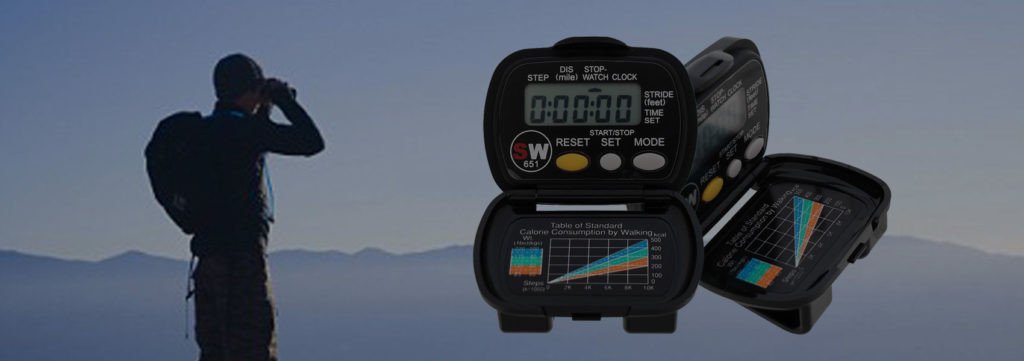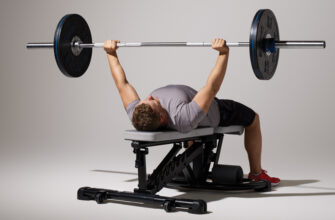When choosing a pedometer, it is worth evaluating first of all its intended use – whether it is a medical device for high-precision activity tracking or just a fitness device to motivate sports activities.

- How to choose a pedometer: basic criteria
- Types of pedometers
- Which pedometer should you choose?
- Selection options
- Accommodation
- The presence of a heart rate monitor
- Smartphone connectivity and mobile app functionality
- Integration into physical activity monitoring ecosystems
- Additional functions
- Top manufacturers
How to choose a pedometer: basic criteria
When choosing a pedometer, you should pay attention to the following device parameters:
-
Type – electromechanical or electronic;
-
Placement (pedometer on the arm, on the belt, pedometer-sneakers);
-
The presence of a heart rate monitor;
-
Connectivity with a smartphone and the functionality of a mobile application;
-
Integration into ecosystems for monitoring physical activity;
-
Additional functions.
-
The manufacturer is also important.
Types of pedometers
Pedometers are electromechanical and electronic. These two types differ in the principle of operation and measurement accuracy.
-
Electromechanical pedometers are simple and budget devices. However, they are often used in medicine to monitor a user's physical activity. The principle of operation of such pedometers is quite simple: after switching on, they are placed on the belt or hip and, in fact, count the number of leg swings.
-
Almost all electromechanical pedometers are highly specialized. There is no connection with a smartphone, no calculation of burned calories, no other functions useful for the 'ordinary' user (including storing the number of steps taken during previous workouts). On the other hand, electromechanical pedometers, due to their placement directly on the waist or hip, count steps as accurately as possible and do not take into account 'garbage' movements such as hand waves.
-
Electronic pedometers are equipped with a large number of biometric and spatial position sensors, including gyroscopes and accelerometers, and calculate the number of steps taken using a special software algorithm. Therefore, their accuracy may not be very high (up to 'loss' of 10% of movements or 'attribution' of non-existent activity), but this is compensated by functionality.
-
Electronic pedometers, depending on the model, can calculate the distance traveled, calories burned, monitor activity for a period, measure heart rate, recognize types of exercise, build jogging tracks, etc.
-
But the main advantage of electronic pedometers is user motivation. Being a 'companion device', such devices are worn by the owner at all times and can remind them to move a little. Electromechanical ones are just a step counter.
!
Electronic pedometers are now being integrated into fitness bracelets, smartwatches, and similar companion devices.
Which pedometer should you choose?

If you need detailed counting of steps taken during training, walking or other physical activity, it is recommended to purchase an electromechanical pedometer with attachment to your belt or hip.
If you just need 'general monitoring' of activity or motivation to walk more, you should pay attention to electronic pedometers.
The main difference between electromechanical and electronic pedometers is that the former only show accurate results when placed on your belt or hip. The latter show equally inaccurate measurements regardless of placement. But at the same time, the 'error' of electronic pedometers is extremely small due to the constant improvement of the software algorithm for the analysis of physical activity.
Almost all modern (as of the end of 2017) electronic pedometers have an error not exceeding a few percent of the actual activity.
Selection options
Accommodation
Pedometers can be placed on the hands (wrists) or on the waist or hips. Also in 2016, several sneaker models with a built-in fitness tracker entered mass production at once.
At the same time, electromechanical-type pedometers are meant to be placed exclusively on the legs or belt. When they are in their pocket or on their wrist, they are not counting their steps correctly. But electronic pedometers are placed where it is convenient for the user.
At the same time, pedometers (fitness bracelets) with rich functionality are placed on the arm. This can make the counts somewhat inaccurate due to the tracking of 'junk' activity. For example, some fitness bracelets even count typing on a computer keyboard as steps. But thanks to the wrist placement in the pedometers, additional useful functions are implemented, such as:
-
Time display and some notifications from a smartphone;
-
The presence of a heart rate monitor;
-
Availability of GPS, sensor of galvanic skin response, temperature, etc .;
-
Waterproof housing.
Belt-mounted electronic foot pads have a simplified design and are intended solely for monitoring physical activity. Those. there are no notifications, no heart rate monitor in them. But they differ in a significantly longer battery life – up to several months.
Running shoes with a built-in pedometer also have limited functionality. They monitor physical activity. Despite the placement of the pedometer in the place of seemingly direct steps, the accuracy of the analysis is not much higher than that of a wrist one.
The main manufacturer of sneakers with a built-in pedometer is the company Xiaomi. But the pedometers built into the shoes are also produced by Nike.
Therefore, when it comes to buying an electronic pedometer, you should choose a device based on your own preferences.
The presence of a heart rate monitor
The heart rate monitor is found mainly in fitness bracelets – universal devices that combine a pedometer and several other sports accessories, depending on the configuration. To calculate the heart rate, he uses a special technology of plethysmography: the skin is illuminated by a special LED, and a photosensitive receiver analyzes the amount of light reflected and absorbed by the blood, and builds a pulse graph based on this data. The measurement accuracy depends on the condition of the skin, the degree of sweating, the tightness of the sensor, and other factors.
In modern (released, in fact, after 2015-2016) fitness bracelets, the heart rate monitor is quite sensitive and has a high accuracy in measuring heart rate, which differs from the real one by several percent or 5-8 beats per minute.
Fitness bracelets with a heart rate monitor should be purchased for novice athletes who have problems with the heart or cardiovascular system. The heart rate sensor will warn you when your heart rate is high and recommend taking a break from the marathon.
Smartphone connectivity and mobile app functionality
Electromechanical pedometers are a 'device in itself' – completely independent and in conjunction with a smartphone does not need. Electronic devices may require connection depending on functionality. Some models, such as Fitbit Charge, can work offline for weeks at all, but Xiaomi Mi Band 2 requires a constant connection with a smartphone.
The functionality of the mobile application largely determines the functionality of the fitness bracelet with a pedometer as a whole. So, if it has a mode for counting calories burned, the device will count. If it has a memory for previous workouts, you can watch them. If it has a physical activity reminder function, the device will vibrate. Etc.
Therefore, if a pedometer is purchased for motivation, you should pay attention to models with a well-developed mobile companion application.
Integration into physical activity monitoring ecosystems
There are many physical activity monitoring ecosystems that store data about exercise, nutrition, wellness, health, and more. The largest are Runtastic, Endomondo, Google Fit, and Apple Health.
If you use one of them, make sure that the data from the purchased pedometer can be loaded there. This will make activity monitoring more convenient and consistent.
Additional functions

Among the most practical additional functions are:
-
Waterproof housing. For running in the rain or just when you sweat;
-
GPS module. For accurate tracking of routes;
-
Sleep tracking. Determines the phases of sleep, its quality and in some cases works as a smart alarm clock;
-
Virtual trainer. Motivates and provides tips for physical activity.
-
In addition, advanced fitness bracelets, in addition to a pedometer, can include sensors for temperature, altitude, galvanic skin response, blood oxygen level and many biometric indicators.
Top manufacturers
In general, in 2017, finding a pedometer is a rather difficult task. These devices are gradually being pushed out of the market by fitness bracelets and smartwatches, which have the same functionality, but at the same time provide comprehensive monitoring of the user's physical activity.
However, several companies still make electronic and electromechanical pedometers. For example:
-
Omron (manufacturer of medical equipment for household use);
-
Pedometer (manufacturer of ultra-budget pedometers);
-
Silva, Tanita (mid-price pedometer manufacturers).
-
Among the manufacturers of fitness bracelets are companies Xiaomi, Fitbit, Jawbone, Moov, Misfit, Garmin and Samsung.
In the following articles, our experts will explain how to choose your running shoes and the best Nike sneakers.
Attention! This material is the subjective opinion of the authors of the project and is not a purchase guide.









